Lecture
the main form of information exchange was the performance of the preachers.
A journalistic sermon that answers topical issues of our time.
Written Christian journalism includes letters, messages, including bulls - messages of the popes.
A distinctive feature of the Christian journalism of the Middle Ages is that its representatives, as a rule, did not practice in one direction, but combined oral and written eloquence.
From the first centuries, two centers of Christian journalism have formed: the western (Rome) and eastern (Byzantium).
The origin and development of proto-newspapers.
A prototype of a newspaper appears in Rome. In 59 BC according to Caesar’s instructions, “The Daily Protocols of the Senate and the Roman People” began to appear on clay tablets, which were subsequently divided into 2 proto-newspapers: “Acta Senatus” (reports on speeches in the Senate) and “Acta diurna populi romani” (city news were reported; lacquer, accessibility - the prototype of a modern mass newspaper; journalists - those who collected information for this newspaper). Authorities closely monitored publications in proto-newspapers. In 15 A.D. Emperor Tiberius closed the “Act of Senate”, because I saw criticism addressed => the world's first case of censorship.
Originating in the 1st century in the Eastern Mediterranean , Christian preaching absorbed the features of both Greek and Ancient Roman, pagan, and Hebrew, Old Testament oratory. Christ Himself, as well as His contemporaries, was most influenced by the Old Testament tradition. The only original source of the New Testament oratory is the canonical Gospels.
The rhetoric of the Old Testament as the first principle of the New Testament sermon.
The rhetoric of the Old Testament (the first part of the Bible) is entirely religious in nature . Old Testament speakers were prophets who proclaimed to contemporaries the revelations they received from God. They opposed social injustice, denounced the authorities, taught that religious observance without love for one's neighbor and mercy is pointless.
The most famous were the prophets Isaiah, Jeremiah, Daniel, Ezekiel . Their books are an important part of the Old Testament.
Moses (c. 1350 - 1230 BC).
The first Old Testament prophet. He is described in the book of Exodus . Moses became a mediator between God and people. On Mount Sinai, He received the Ten Commandments from God. He died at the age of 120.
Moses was naturally tongue-tied. All he heard from God, he reported to brother Aaron , who, having oratorical abilities, spoke on behalf of Moses before the people.
The rhetoric of the Old Testament had a decisive influence on the New Testament sermon, became the standard for many New Testament preachers.
John the Baptist.
The starting point of New Testament rhetoric is the sermon of John the Baptist. He led an ascetic lifestyle, lived up to 30 years in the desert. The main goal of John the orator is to prepare people for the coming of Christ and the perception of his sermon.
For exposing the wicked life of King Herod, the irreconcilable preacher was imprisoned and then executed.
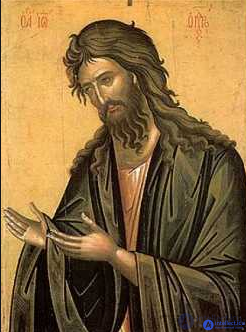
Jesus Christ.
He was baptized by John, began to preach at the age of 30.
The sermons of Christ can be divided into 3 types:
- designed for apostles and closest disciples
- spoken to ordinary people
- turned to the Pharisees and the Jewish religious and political elite.
In general, Christ systematized and outlined His teachings in the Sermon on the Mount , delivered to disciples and a large number of people. He put forward the ideal model of behavior for a new person.
Subsequently, Christ developed and specified the principles expressed in the Sermon on the Mount. His sermons were purely practical. The Savior's goal was not only to enlighten the mind, but also to purify the hearts of the audience, He taught morality.
In each Gospel, either spatial criticism of the Pharisees , or individual replicas of Christ against opponents are constantly found. The polemic acuteness of Christ's speeches to the Pharisees is explained by their hatred of Jesus and the denial of His teachings. In a polemic with them, the Christ orator appears as a skilful master of an immediate and vivid answer to the provocations of his interlocutors.
Christ often reinforced his sermons with various miracles (for example, pacifying the storm, healing the terminally ill, etc.). All miracles had a deep inner meaning.
A parable as a rhetorical device.
For a better and figurative understanding of his speeches, Christ used parables that were simple and clear, and also had a local character. The skillful and appropriate use of parable stories and examples is the special power of Jesus' speeches.
A parable is a story about a fictional, but completely believable event, in order to clearly explain any moral or spiritual object.
The parable was more quickly remembered, it was connected with the history and customs of the Jewish people, as well as with the professional activities of people (for example, agriculture).
The oratory of the apostles.
After the end of Christ's earthly ministry, Christian rhetoric acquires not only an oral character (sermon), but also written (epistles). In the New Testament we see the development of rhetoric in the Acts of the Holy Apostles written by the Evangelist Luke , and in the Epistle of the Apostles James, Peter, John, Jude (namesake of the traitor), Paul.
Apostle Peter
The first among the 12 apostles. His independent oratory and preaching work began 10 days after the Ascension of Christ , on the day of the coming of the Holy Spirit upon the apostles . On that day, Peter delivered a fiery speech addressed to the inhabitants and guests of Jerusalem. In it, he explained through the examples of the Old Testament that the crucified Jesus of Nazareth is the very Messiah whose arrival was predicted by all the Old Testament prophets. On the same day, 3,000 people were baptized. The second speech the next day Peter converted 5,000 people to Christianity.

With these two speeches of Peter began the era of Christian preaching.
Peculiarities of Peter's rhetoric in its artlessness, brevity, in the absence of introductory sentences, metaphors and rhetorical figures, in the strict and logical construction of speeches. Peter's speech, in spite of laconicism, always sounded sincere and convincing.
Archdeacon Stephen.
Acts details the only speech of Stephen delivered in Jerusalem before the court of the Sanhedrin. In this speech, he argued that Christ is the Messiah and thus the era of OT gave way to the era of OZ.
The listeners were so indignant at his speech that, without letting him finish, they stoned him to death.
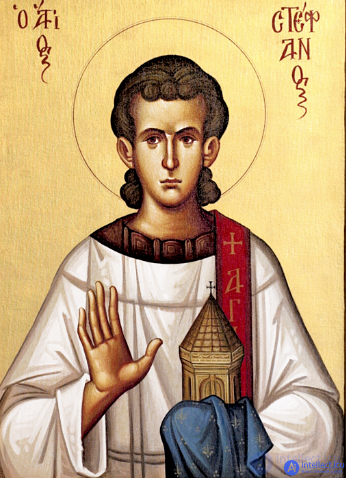
Apostle Paul.
His oratory is of particular importance, his missionary and oratory activities take a leading place in the book of Acts . His most important speeches are given there, among which are speeches in the Athenian Areopagus and speeches before King Agrippa.
Pavel’s speeches are rich in rhetorical figures and often differ from each other depending on the audience.
In 64, by order of the emperor Nero, Paul was executed.

The 13 epistles of the Apostle Paul included in the NT are divided into:
- missionary (addressed to residents of certain cities and regions: Romans, Corinthians, etc.);
- pastoral (addressed to the disciples: Titus, Timothy, Philemon).
Of the missionary messages, the first letter to the Corinthians is most characteristic. The main theme is the unity of the Church .
New Testament rhetoric had an exceptional impact on the further development of spoken and written words. The Christian vocabulary of the Apostle Paul is firmly entrenched in European journalistic speech.
The fall of the Roman Empire in 476 interrupted the development of proto-journalism for a long time. The volume of journalistic creativity sharply decreased. A literate audience was reduced, secular journalism and rhetoric were almost entirely supplanted by religious, Christian. In 325, under Emperor Constantine, Christianity became the state religion.
The development of Christian rhetoric in the 4th century proceeded, as in the 1-3 centuries, in 2 major areas - oral and written.
The oral tradition includes a sermon that can be divided in terms of audience reach into a parish (delivered by a priest in a church in front of Christian parishioners) and a missionary (delivered by a missionary priest in distant lands in front of the Gentiles in order to convert them to Christianity).
According to the content, sermons are divided into 4 types:
· Omilia ( homilia ), or explanatory conversation, which sets as its task the explanation of the Holy Scripture.
· A word that is pronounced on the occasion of a church holiday or a day of remembrance of a saint.
· A catechetical teaching , which sets out the lessons of faith, moralizing, and worship.
· Journalistic sermon that answers the burning questions of our time.
Written tradition includes letters, epistles, and bullas (epistles of the popes).
A distinctive feature of the Christian rhetoric of the Middle Ages is that its representatives did not practice in one direction, but combined oral and written eloquence.
In this era, the spoken word dominated the written.
2 centers of Christian rhetoric:
Western (Rome)
Eastern (Byzantium)
Representatives of the Western tradition include Jerome Stridonsky, Ambrose Mediolansky and Aurelius Augustine.
Jerome of Stridon (c. 340 - 420 gg.).
He was one of the most diversified people of his era (rhetoric, literature, Greek). He combined great scholarship with active preaching and journalistic activities.
About 200 of his letters have survived to this day, among them the "Letter to Magnus, the great orator of the city of Rome."
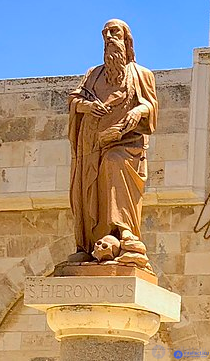
Statue of St. Jerome (foreground) in front of the Church of St. Catherine in Bethlehem
Ambrose Mediolansky (c. 339 - 397 gg.).
He was fluent in oratory and was able to freely deliver speeches in Latin and Greek. For some time he was a judicial speaker , then worked in the public service . Having adopted Christianity, Ambrose became the bishop of the city of Mediolana (Milan).
Tombstones of Ambrose were very popular ( “On the death of Theodosius” of 395 , for example). These speeches are a perfect example of oratory and an important historical document.
In his “Letters on the Altar of Victory” he pointed to the decline of Rome and glorified Christianity.
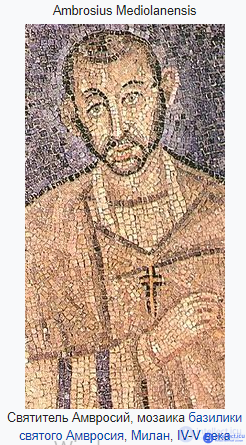
Aurelius Augustine (354 - 430 years).
After graduating from grammar and rhetorical schools, Augustine taught rhetoric, then moved to Rome, where in 385 he received the position of official rhetorician in Mediolan . Many of his works have survived to this day, which characterize him as an unsurpassed rhetorician and a bright speaker.
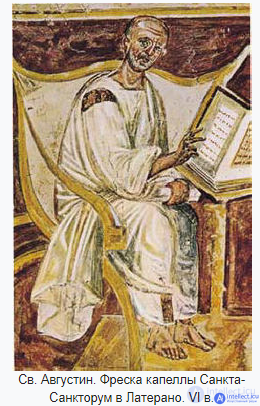
The Eastern tradition of Christian rhetoric was represented by Gregory the Theologian, Basil the Great, and John Chrysostom.
Gregory the Theologian (c. 326 - c. 390).
He studied rhetoric with the famous pagan orator and rhetorician Libanius , then in Alexandria and the Academy of Athens he studied mainly sophistry and rhetoric. After graduation, he taught rhetoric at the academy for several years.
Since ancient times, the Christian church has revered him as a great universal teacher. Gregory was the first of the Byzantine writers and publicists to publish a collection of his own letters. He was the most quoted author in Byzantium.
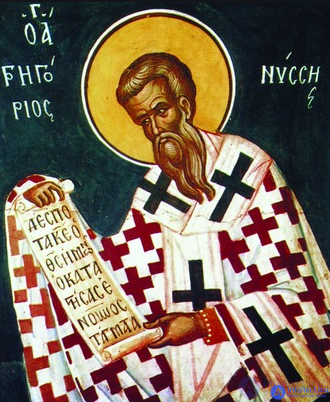
Basil the Great (c. 329 - 370 gg.).
He went through all the steps of the church hierarchy and became famous for his speeches and conversations against heretics . His word was compared to thunder, and life was compared to lightning.
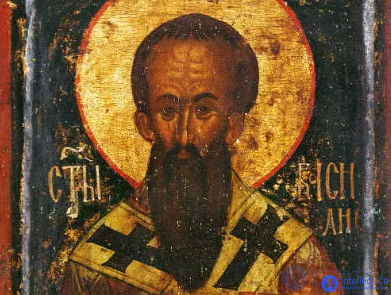
John Chrysostom (344 - 407 gg.).
He received a brilliant pagan education , including from Libania . At the age of 20, he became a lawyer , but soon decided to devote himself to God and became a monk .
In his sermons he denounced corruption in the capital, angrily rebuking high society for deviating from gospel truths. Oratory criticism touched on all levels of power, right up to imperialism. Died in exile.
He successfully combined the moral pathos of Christianity with the ancient tradition of Greek oratory in his journalistic work. His sermons touched on the most pressing problems of the late 4th - early 5th centuries. At all times, Chrysostom was considered and is considered the most perfect model for all preachers .
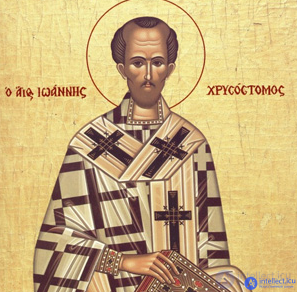
According to the content of his sermons are moral and practical . The preacher's goal is to correct the sinner and affirm him in virtues. The sermons are very simple, vibrant, and persuasive.
The most famous of his creations is “The announcement word for Holy Easter . ” Among his epistolary heritage, the most famous are “Letters to the Olympics” - a cycle of 17 letters to his spiritual daughter, who, like him, was in exile. In addition, John composed the “Rite of the Liturgy” - the most important church service, according to which the Orthodox Church still serves.
* Libany (314 - 393 gg.).
Teacher and antagonist Gregory the Theologian, Basil the Great and John Chrysostom. The last great orator of pagan antiquity, the most famous sophist and master of eloquence among contemporaries. At 25, he became a member of the Academy of Athens. In Constantinople opened his school of eloquence. He was a representative of the "second sophistry." Libania's tongue is an impeccable role model.
Libania's speeches mainly concern state and public topics. For example, “Tombstone speech to Julian” (368) and the speech “To Emperor Theodosius in defense of temples” (384).
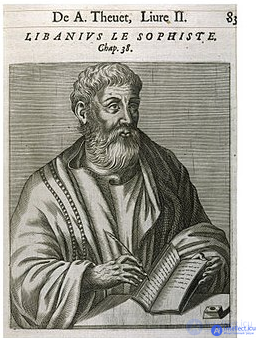
Cyril (827 - 869 gg.) And Methodius (815 - 885 gg.) Solunsky.
Church publicists, monk brothers. In 863, they were invited by Prince Rostislav to Moravia (modern Czech Republic), where they translated the main liturgical books from Greek and based on the Greek-Byzantine script created the Slavic alphabet , called Cyrillic. Cyrillic was a moral imperative of good and evil, served as a message to descendants for centuries to come.
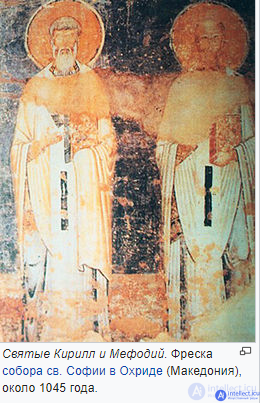
The development of censorship.
Censorship during this period has not yet taken shape. Starting from the 9th century in Christian countries there were frequent cases of the burning of books (anti-Christian, pagan), condemned and banned by church councils and popes
Comments
To leave a comment
Journalism History
Terms: Journalism History